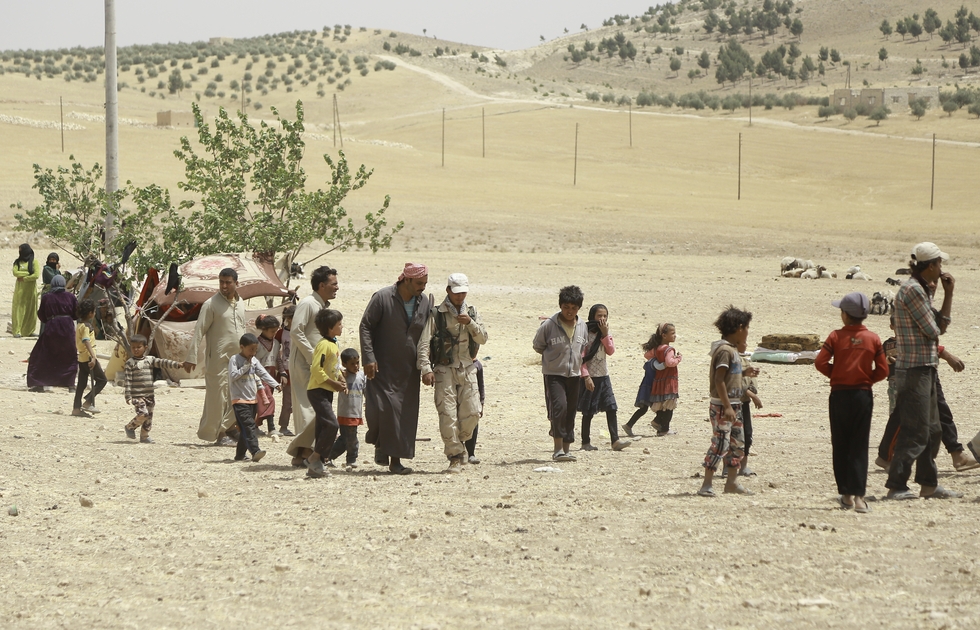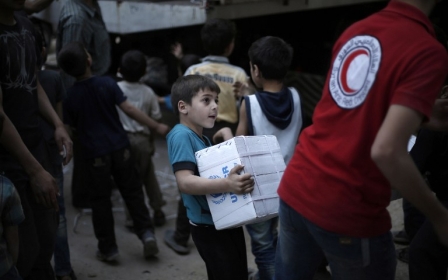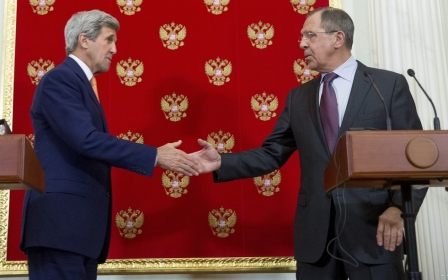Residents flee IS-held Syria town as US-backed forces close in

Thousands of civilians on Tuesday fled a key town along the Islamic State (IS) group's supply lifeline in northern Syria as US-backed fighters closed in from three sides.
The offensive on the town of Manbij is one of two major assaults on the group's supply line from the Syrian-Turkish border to IS's bastion of Raqqa.
The Syrian Democratic Forces (SDF) alliance began its offensive against Manbij just over a week ago, crossing the Euphrates River and pushing west towards the town.
"We have surrounded Manbij from three sides and operations are progressing well," said Sherfan Darwish, who is leading the SDF offensive.
"Every day, we are liberating villages and the only route open to IS now is towards Aleppo city" to the west, Darwish told AFP by phone.
Overnight, SDF forces edged to within five kilometres of Manbij from the north, the Syrian Observatory for Human Rights monitor said.
SDF fighters had pushed to within two kilometres of the town to the south and around seven kilometres to the east.
"Daesh has begun allowing civilians to flee towards the west, whereas before they had banned anyone from leaving," Observatory chief Rami Abdel Rahman said, using an Arabic acronym for IS.
He said some were in cars but many were carrying their belongings and walking along unpaved roads as IS fighters remained in the town.
Vital supply route
Manbij, in Syria's border province of Aleppo, had a pre-war population of about 120,000 - mostly Arabs, but about a quarter Syrian Kurds.
IS overran the town in early 2014, just months before gaining international infamy by declaring a cross-border "caliphate" in Iraq and Syria.
The "Manbij pocket" was the only remaining section of territory used by IS to smuggle recruits or funds from Turkey across the border.
The US-led coalition battling IS in Iraq and Syria has carried out heavy air strikes to support the fight for Manbij.
The IS supply route leads from Jarabulus on the border south through Manbij and winds southeast along the Euphrates through the town of Tabqa and on to Raqqa city.
Washington, which has more than 200 special forces troops deployed to back the SDF, has said some 3,000 Arab fighters are taking part in the assault, supported by around 500 Kurds.
The Observatory has said that of the 4,000 fighters it estimates are taking part, most are actually Kurdish.
The SDF advance on Manbij has cut the route to Jarabulus to the north and to Raqqa province to the south, Darwish told AFP.
Tabqa, another IS-held transit town which also lies near Syria's largest dam, is also under attack on two fronts.
While the SDF are pushing down from the north, Russian-backed Syrian government forces are advancing to IS positions from the southwest.
The timing of the dual anti-US offensives has raised speculation about possible cooperation between the US and Russia in the anti-IS fight, although the US has long denied that it is willing to do anything more than provide basic coordination to ensure US-led anti-IS coalition planes don’t collide with Russian jets over Syrian airspace.
"There is a joint operations room in Baghdad where the Iraqis and the Syrians are coordinating with the support of the Americans and the Russians," a source close to the government said on Monday.
Around Tabqa in particular, the source told AFP, it would be "impossible" for the US and Russia to back their respective ground allies if they did not coordinate.
London-based analyst Matthew Henman told AFP that any coordination between Washington and Moscow has so far been "informal".
"There may be an element of informal, top-level coordination to avoid any confusion or inadvertent clashes, but full coordination is unlikely," said Henman, who heads IHS Jane's Terrorism and Insurgency Research Centre.
Russia last month floated a proposal for joint air strikes with the US against militants in Syria, but the offer was swiftly rejected.
New MEE newsletter: Jerusalem Dispatch
Sign up to get the latest insights and analysis on Israel-Palestine, alongside Turkey Unpacked and other MEE newsletters
Middle East Eye delivers independent and unrivalled coverage and analysis of the Middle East, North Africa and beyond. To learn more about republishing this content and the associated fees, please fill out this form. More about MEE can be found here.




